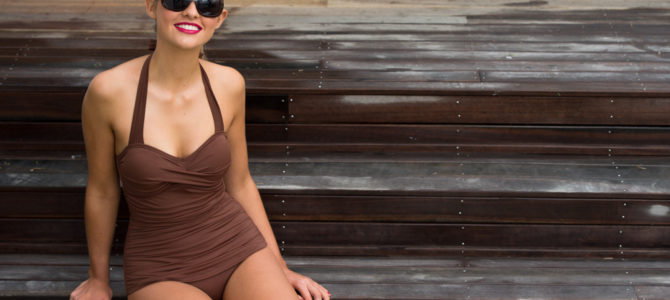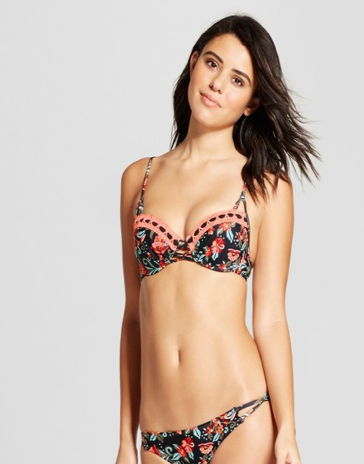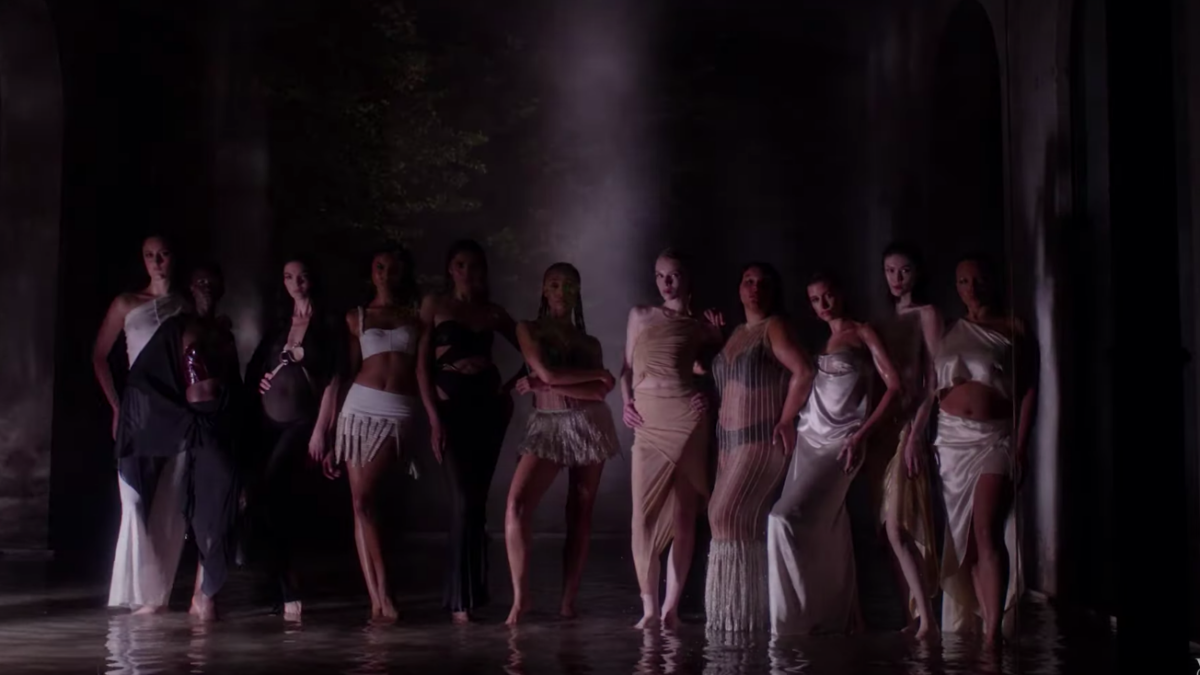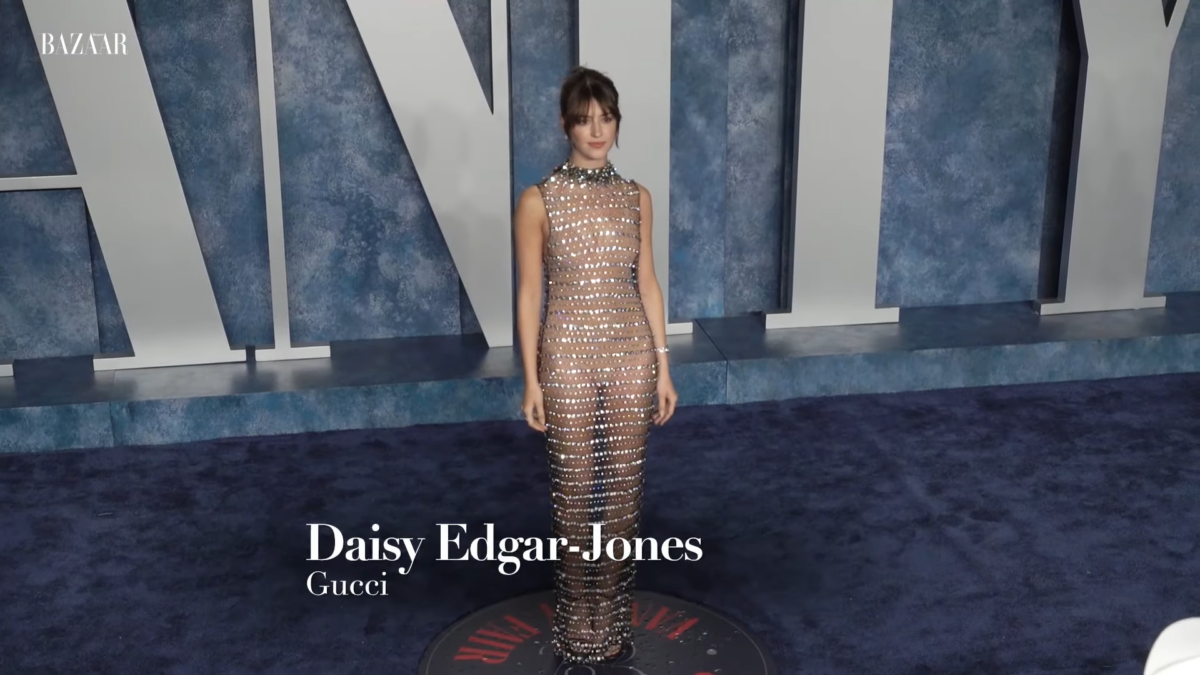
Just when you thought the ice age would never end, that glorious yellow ball of fire has made a stunning comeback. You’ve gotten your first touch of sunburn on your forearms and lawn mowers are purring in the distance. Summer won’t sneak up on you this time; you rummage through your closet and find last year’s swimsuit, praying it still fits so you can start gently building your tan before your deck turns into a frying pan. And … it doesn’t.
Ranked in terms of uncomfortable retail experiences, swimsuit shopping is second only to bra shopping. If you’re buying in store, it’s a painful, drawn out process as harsh and unforgiving as the fluorescent lights in the dressing rooms. If you’re buying online, it’s as close to a guessing game as clothing shopping ever gets.
I can’t tell you whether a swimsuit from an unknown Chinese retailer on Amazon will fit, but I’ve done some browsing this season (I mean, err, research), and I’ve curated a few style trends I’d advise against (to put it mildly), and a few you might want to try for yourself.
We’ll start with the bad and the ugly, after which you’ll be thinking, “Please tell me what my options are besides these hell-dipped pieces of polyester.”
‘Care Bear’ Style
The “Care Bear” style with the unflattering cutout in the belly is STILL HERE.

The only way to make this design worse is to add ruffles. Who wants to have to worry about sucking in all the time so you don’t pooch? And is anyone concerned about the weird tan lines? Because what I really really want to see when I step out of the shower is a nice golden diamond front and center to highlight how pasty the rest of my torso is. Then again, maybe that’s not a concern since we’re all slathering on the SPF 70 these days anyway.
Strapless Bikini Tops
Really, this one is fastened with a string? In the front? I hope whoever buys this has a girlfriend standing by at all times with a giant umbrella to cover her in the inevitable event her top falls off.

I mean, this is fine if you’re very thin and you don’t plan on actually swimming in it. At all. Ever. Why would you want all the self-consciousness and the constant adjustments that come with strapless tops in a scenario where slippage is practically inevitable?
Nevertheless, designers have persisted.
Strappy Suits
No. Just, no.


Nominated by me for “Most Unflattering Strappy Swimsuit.” This is all sorts of terrible. Even by Forever 21 standards, this is bad. And could you pick a worse color? $10 says it’s see-through when wet.
Push-Up Low-Coverage Bikini Top
Looking for another way to risk indecent exposure on the beach? Perhaps you plan on strutting a beachside catwalk? Just add an oversized bow in the back and you’ll be ready for the next Victoria’s Secret fashion show.

This design isn’t new per se, but it’s still a bad idea for, oh, about 98 percent of women.
Vintage Two-Pieces
The “vintage” design is especially popular among the plus sized for its supportiveness up top and slimming high-waisted, high-coverage bottoms. You can choose from a variety of vintage swim sellers on Amazon.

I really get why it’s popular, but despite the underwire (clearly a modern upgrade), all this ruching and polkadots and sailor-inspired designs make you look like you’re trying to live in a different era. For that reason, it’s among my least favorite this year.
There’s no shortage of high-waisted bottoms with a modern feel, and more swim tops in a variety of styles are being built with more support for the generously endowed. The present of swimwear has much more to offer than the 40s or 50s did, so don’t think you have to sacrifice modern style for coverage, slimming, and support.
Now that the awkward tour through “What Not To Wear: Swimsuit Edition” is concluded, here are the good trends. Or at least, the better.
Straps That Flatter
We’re seeing fewer styles with zig zag strings across the midsection, connecting what would otherwise be a bikini (because who doesn’t want all the inconvenience of a one-piece with none of the coverage? Then again, if your top falls off in the water, at least it wouldn’t drift too far away.)


Thankfully, this year’s strappy styles tend to have more closely gathered zigzags to avoid pooching or over areas of the swimsuit where straps are more flattering, such as across the decolletage.
Swim Tops That Look Like Normal Tops
By now we’re all familiar with swimdresses. They’re high coverage compared to other swimsuits and ultra feminine. The longer ones basically look like mini-dresses, and that’s what makes them “work” aesthetically. Expanding upon the trend of swimwear that could fool a distant onlooker into believing you’re wearing ordinary clothes, these new, clever pieces imitate styles that work for a variety of body shapes in day to day life.
Peplum Ruffles
These add a feminine flair without being too girly. They might get annoyingly sticky when you first get out of the water, but is it a small price to pay for cute and sensible coverage? I think so.

The “flowy” style is forgiving for those with stomachs that don’t break pine boards. Pair it with control panel swim bottoms and you’ve got the perfect postpartum swimsuit.

Of course, you had to guess that eventually someone would make a swim romper. It’s great in theory, but a flop in execution (at least from Target).
‘Loungewear’
Although I’ve been critical of paperthin leggings in the past, it seems a trend now is to make swimwear look like loungewear. That’s fine by me, because let’s be honest: none of us are doing the catwalk at a Victoria’s Secret fashion show. We’re bumming around on beaches and by the pool. We’re lounging. It makes perfect sense to design tops or one-pieces that can pass as “real” clothes (as “real” as leggings, anyway). No need for cover-ups or worrying about the fabric of your suit looking bumpy and weird underneath a shirt or dress (for this reason I despise frilled trim and twist bandeaus), you can just get up and run to the convenience store to pick up a sixpack and no one can accuse you of being immodest or unfashionable.
You can also find swim bottoms that look pretty much exactly like biker shorts, which is a great a solution for the thigh-conscious.
The “baggy style” is unique among swimsuits right now. Unlike the A-line flowy tops, the elastic at the bottom (theoretically) keeps the top from sliding up in the water.

You can also find tankini tops that look sort of like athletic tank tops. It’s cute and practical for water or beach activities like volleyball, or paddle boarding.

Last year I praised the fact that high coverage swimwear is on the rise again, but making swimwear look as much like normal clothing as possible is the most brilliant design innovation yet.
Most of women’s frustration and anxiety over swimsuit season is due to the fact that swimwear has been fundamentally different from normal day to day clothing: it’s been very tight, unsupportive, highly revealing, and generally unflattering for larger bodies outside higher end collections.
Closing the gap between normal clothing and swimwear may help alleviate some of the pain of shopping for swimsuits. Though many women shed a few pounds during the spring in preparation for summer, they aren’t all converting to the Jillian Michaels lifestyle. They’re going to need some options that flatter the body they have (or at least don’t seriously unflatter it), not the body they wish they had.
This will, of course, come with tradeoffs. Loose, flowy or baggy tankini tops and swimdresses tend to cling in unflattering ways when you first exit the water, and they’re not suitable for all water activities. But those of us who mostly wade and lounge will happily accept the compromise.
Now that you have an idea on what’s out there, you can venture into the swimsuit jungle with confidence. Be bold! But not so bold that you buy a strapless bikini — let’s not get carried away here. Maybe just bold enough to look like you’re wearing normal clothes.









